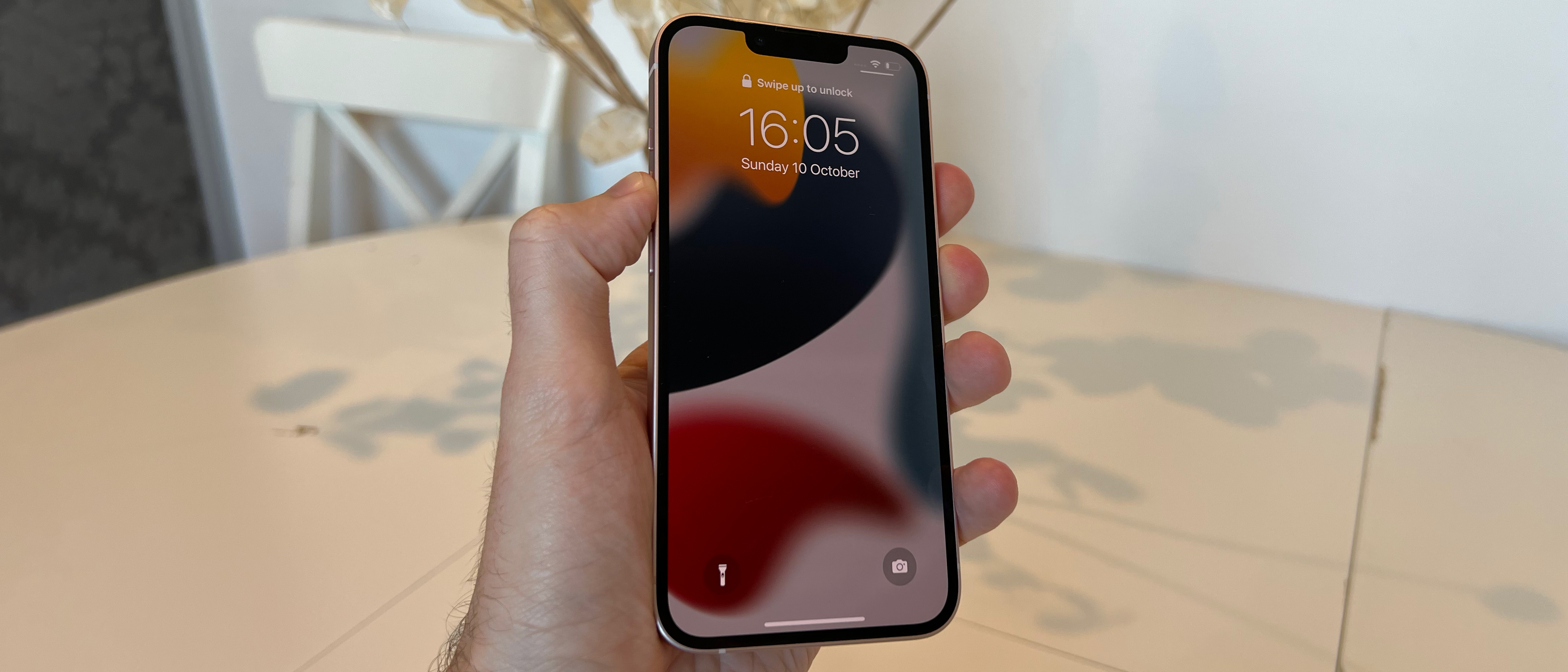Our Verdict
The iPhone 13 is an excellent phone for demanding creatives who don't want the expense of the Pro model, delivering uncompromising image quality from both its screen and camera, and improved battery life as a bonus. While the iPhone 13 Pro does offer more, what you get here is hard to fault.
For
- Accurate & sharp screen
- Very impressive cameras
- Improved battery life
Against
- No 120Hz screen
- No ProRaw photography
Why you can trust Creative Bloq
Size: 71.5x146.7x7.65mm
Weight: 173g
Processor: Apple A15 (4-core GPU, 4GB RAM)
Resolution: 1170x2532
Screen: 6.1-inch OLED Super Retina XDR display
Storage: 128/256/512GB
Battery: 3,227mAh
The iPhone 13 is an excellent update to a phone that was already massively impressive, taking the basic shell of the iPhone 12 and upgrading pretty much every single part, improving them with thoughtful nips and tucks.
Compared to its predecessor, the iPhone 13 gives you longer battery life, improved camera hardware and software, a more powerful processor, more visible screen outdoors, and a larger base storage option that's ideal for most casual users.
Compared to iPhone 11 or earlier, the iPhone 13 is an even bigger leap forward. You get a smaller and lighter design, astounding OLED screen upgrade, and major camera improvements in all areas. It's going to be a massively tempting upgrade, and deservedly so, because it nails pretty much everything it's going for.
It's just an excellent phone in its own right, but for creatives, the question is whether the iPhone 13 Pro gives you enough extra to be worth the cost. We'll explore that throughout this review, though the simple version is: the Pro's even better cameras and ProRaw photography, plus even longer battery life, really do make a difference. But in all other ways, the iPhone 13 is its equal, and feels like a truly premium and capable tool.
In this review, we're mainly talking about the iPhone 13, but the vast majority applies to the iPhone 13 mini too, since they almost all features. We'll mention the mini's differences where it's important, which boils down to screen size (5.4 inches vs 6.1 inches in the larger 13) and battery life.
Apple iPhone 13 review: price
The iPhone 13 starts from $799/£779/AU$1,349, which gets you 128GB of storage. You can jump to 256GB of storage for $899/£879/AU$1,519 or up to 512GB for $1,099/£1,079/AU$1,869.
128GB should be enough for most users, especially with Apple's use of offloading photos and apps to the cloud – but if you want to store a huge amount of photos on videos on-device, then you'll want to consider the larger sizes.
The price is right on the line where the upper-mid-range topples into flagship range. But the iPhone 13 offers better than the iPhone 12 did at just about the same price, thanks to the extra storage, longer battery life and general improvements.
However, if you want to save some more money, you can always go for the iPhone 13 mini instead. This costs $699/£679/AU$1,199 for the 128GB version, $799/£779/AU$1,369 for the 256GB version, or $999/£979/AU$1,719 for the 512GB version. See more in our guide to the best iPhone 13 deals.
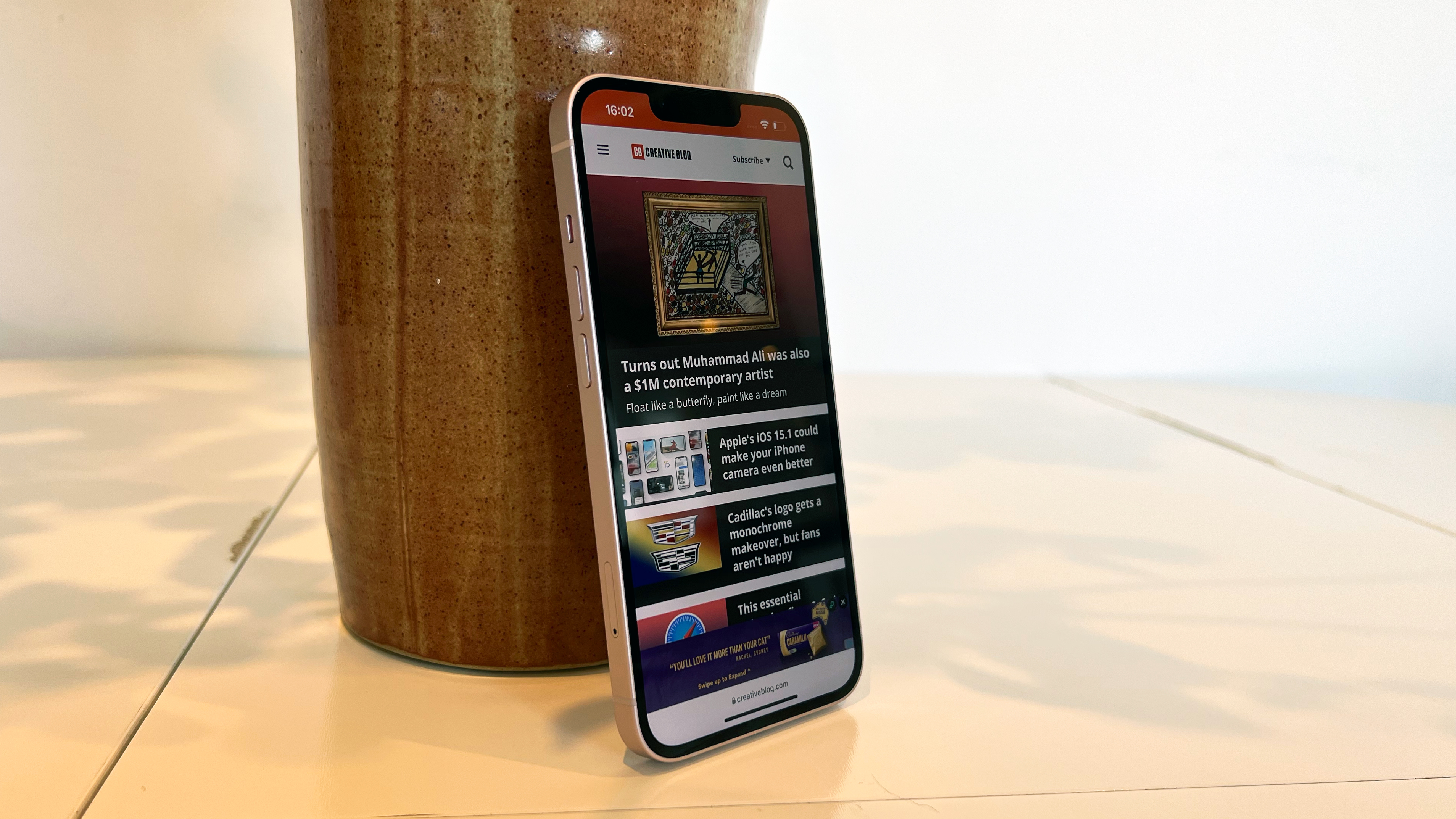
Apple iPhone 13 review: display
The iPhone 13 has a 6.1-inch OLED display, with a resolution of 1170x2532, which works out as a super-sharp 460 pixels per inch. It also supports HDR, including Dolby Vision and HDR10, and with HDR content it can hit a peak brightness of 1,200 nits, which is massively impressive, and looks equally impressive in practice.
There's P3 colour gamut support, excellent accuracy, and Apple True Tone tech makes reading much easier on the eyes in indoor lighting.
Even better: all of these specs match the iPhone 13 Pro, so in ways that are most meaningful, it's the equal of the more expensive model.
On the flip side, those specs are also all the same as the iPhone 12, so there's no massive change here if you have the previous model. It is, however, a gigantic step up from the iPhone 11, which has a lower-resolution LCD screen with no HDR support.
The iPhone 13 does have one improvement over the iPhone 12's screen though: it can now boost itself to a higher brightness when in use outdoors, under bright sunlight. This can help it stay a bit more visible for things like composing photos – it's a nice improvement, though not a game-changer.
What it lacks compares to the iPhone 13 Pro is ProMotion tech for higher (and lower) refresh rates. The Pro model refreshes at up to 120Hz during motion, or down to 10Hz when a screen is static. This makes scrolling and animations look sharper and clearer, and saves battery on still screens.
The good news is that while the higher refresh rate is a very nice feature to have in terms of making things look nice, it has little practical benefit, and living without it is perfectly fine.
The iPhone 13 mini has all of the colour, HDR and brightness boons that its bigger sibling has, just in a smaller screen. It's a 5.4-inch display, with a resolution of 1080x2340, which is actually 476ppi, so marginally sharper than the full-size iPhone 13 (though not in any meaningful way).
Is this too small? Not at all for general use, in our experience. The iPhone mini continues to feel weirdly novel – when was the last time you used a cutting-edge phone you could reach all the way across with your thumb? We've absolutely loved testing it… but we won't be switching from the full-size version, and we expect most creatives won't either.
The portability and lightness of the iPhone 13 mini are so welcome, but the extra canvas of the larger version is so useful for everything from watching video to editing photos to dealing with the cluttered web pages of today.
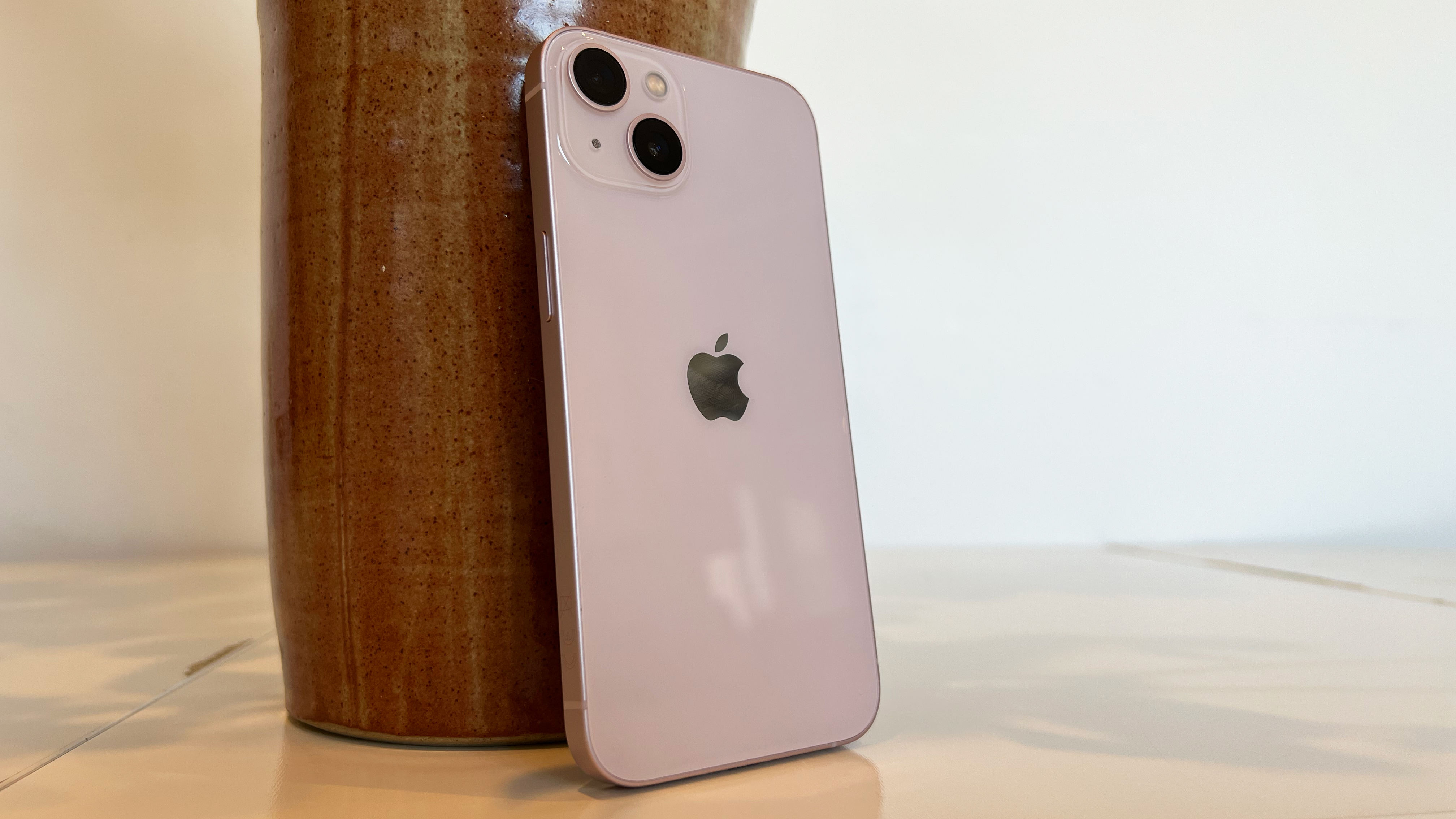
Apple iPhone 13 review: cameras
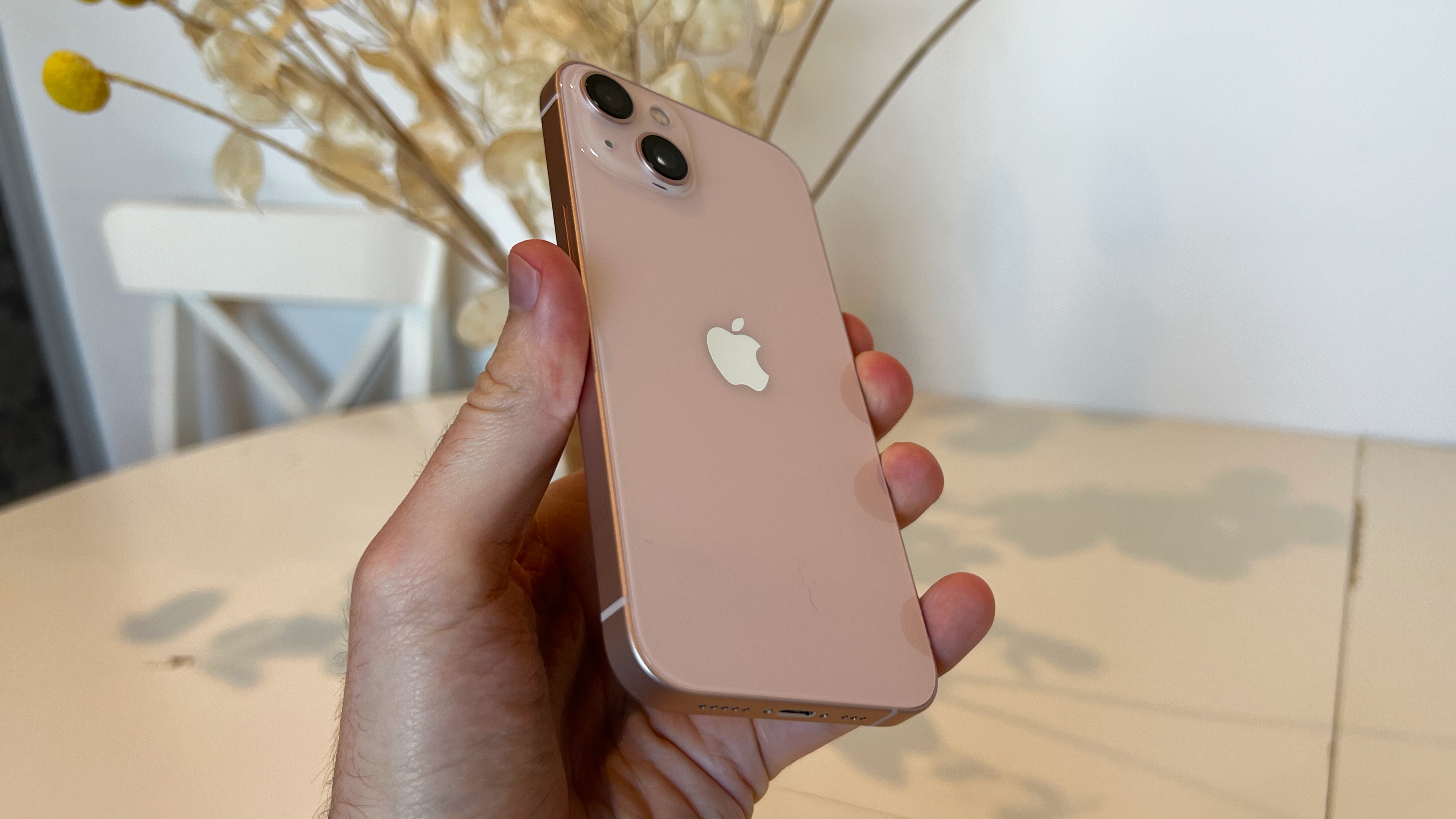
The cameras are one area where there have been significant changes in the iPhone 13 compared to the iPhone 12 – moreso than when comparing the iPhone 12 to the iPhone 11.
The crucial hardware parts are that the sensors are larger (the wide-angle lets in 47% more light), and the wide-angle lens now features sensor-shift stabilisation. On the software side, you've got new and more advanced versions of Apple's image processing, powered by the A15 chip.
It's still a dual-lens camera, so you have a wide-angle f/1.6 lens and an ultra-wide f/2.4 lens – both with 12MP sensors behind them.
When compared to the iPhone 12, the difference in optimal conditions isn't huge. There's no huge leap in detail or colour accuracy – in bright light, phone cameras work pretty damn great these days. The biggest thing we noticed was a slightly more dramatic bokeh effect thanks to the larger sensor.
Compared to the iPhone 11, you will see more of an improvement, especially in colour depth and dynamic range.
However, in anything less than optimal conditions, the iPhone 13 makes a clearer case. In the literal sense: in mid or low light, it picks up detail, contrast and colour far better than its predecessors.
It can also take better shots if you're moving in a hurry too – it can use faster shutter speeds, and features that sensor stabilisation, so you're far more likely to get a shot that's actually worth keeping when dealing with kids and animals.
The less you have, the more dramatically the iPhone 13 improves results over previous models. Night mode is especially interesting though, because instead of using the improved sensor to light things further, Apple is deploying it to add more dynamic range to what it captures, so you get extra nuance between light shade within what Night Mode is doing, and more accurate colours than the past too. See our guide to the best camera phones for more options.

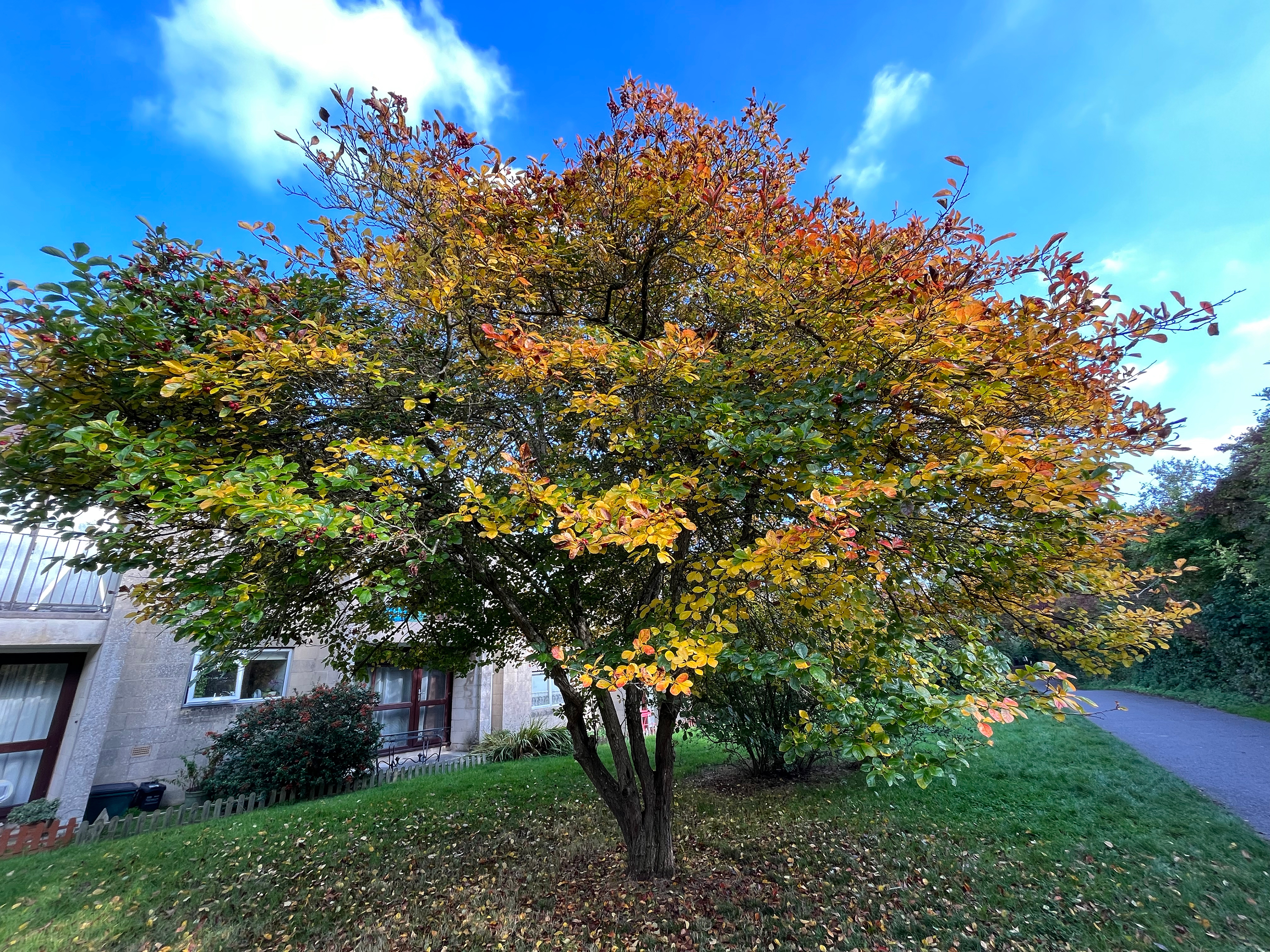


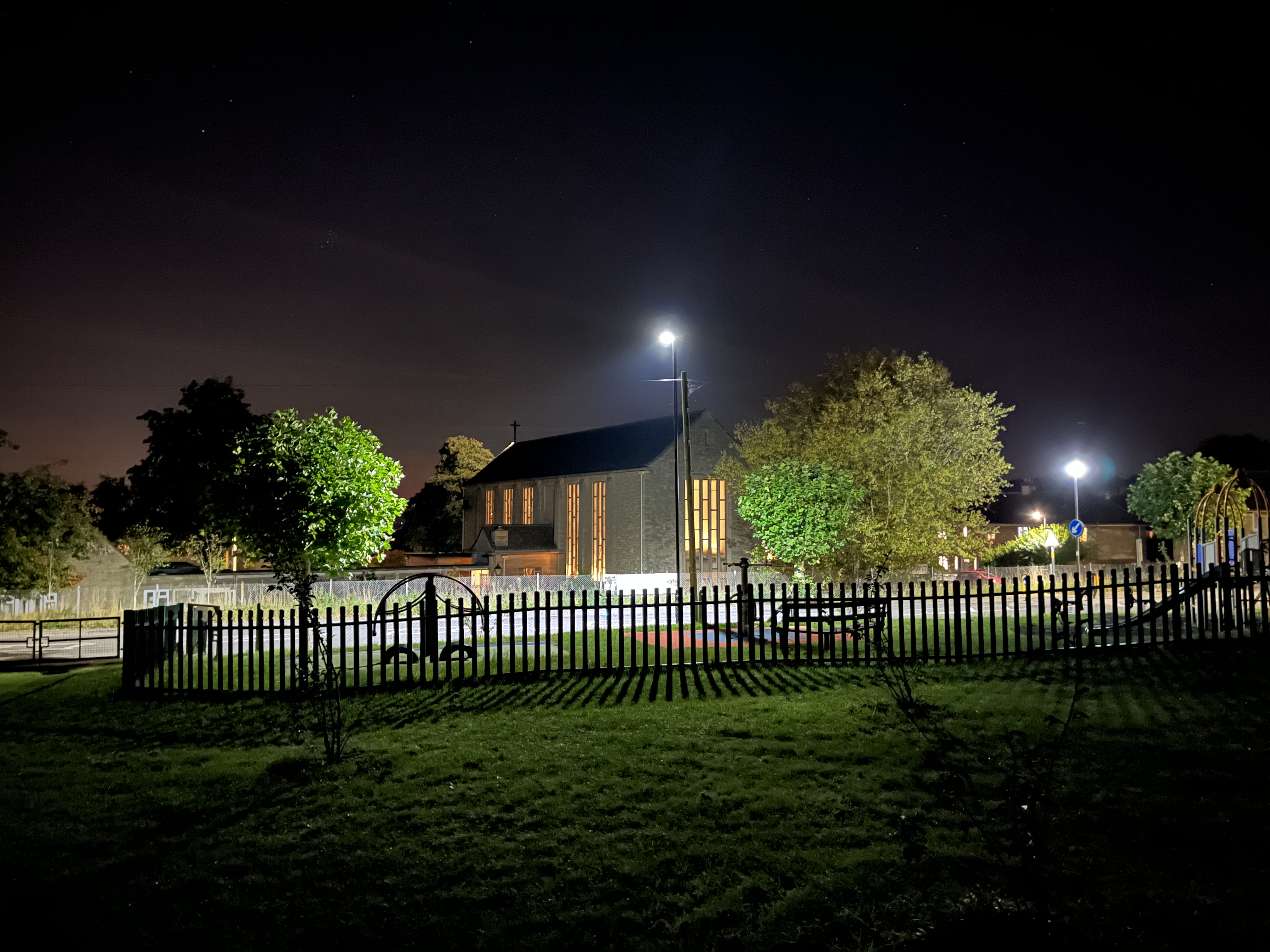
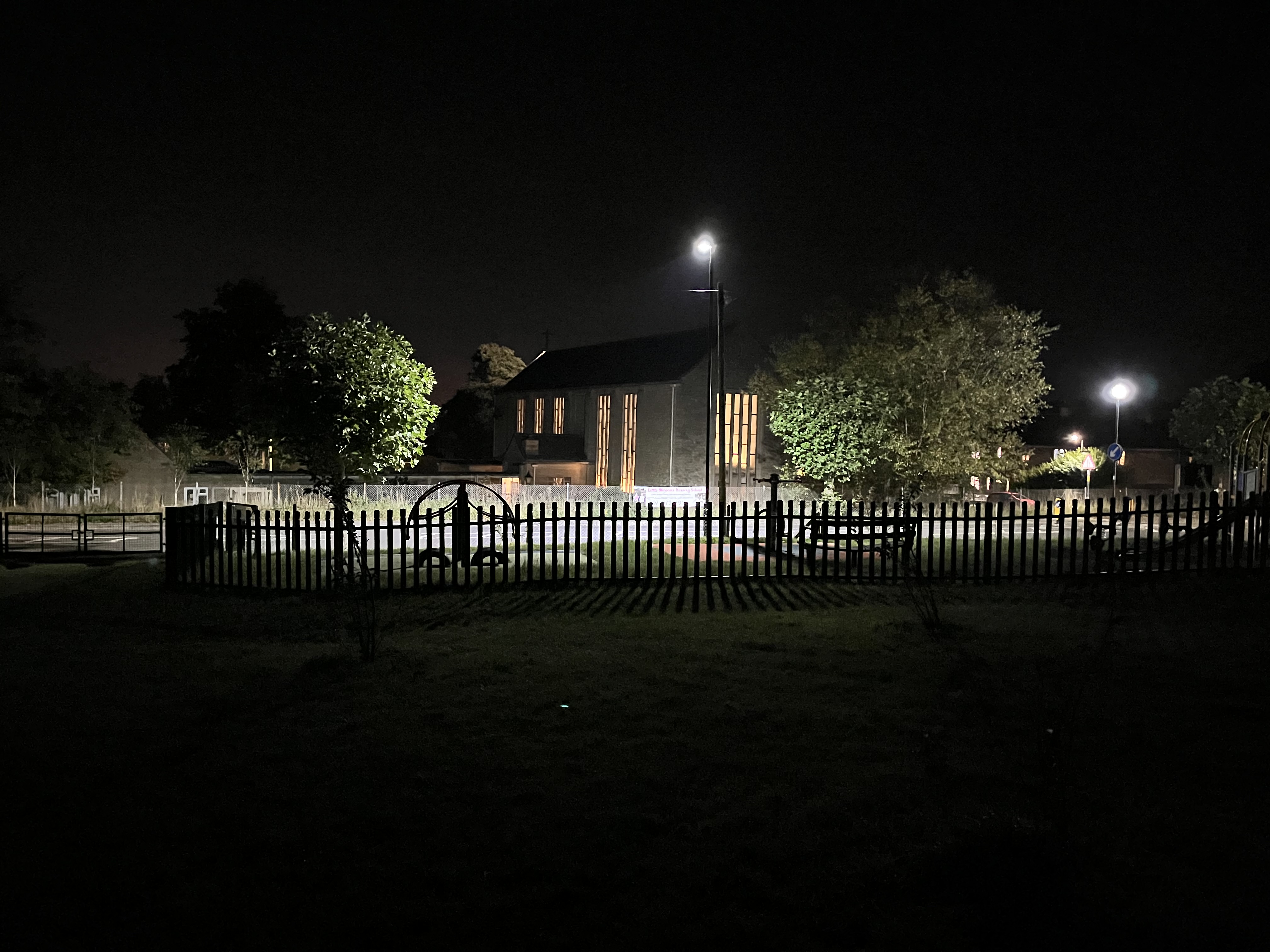

Another new feature for this year is 'Photographic Styles', which basically lets you tweak the processing the iPhone is doing to make it more your taste, if you prefer. You can choose from five presets (Standard, Rich Contrast, Vibrant, Warm, Cool), though you can actually customise within those presets, moving one slider marked 'Tone' and one marked 'Warmth'.
Crucially, this isn't like applying a filter. It's affecting how the iPhone processing images during shooting, so you can use it to boost colours overall, but the iPhone will still aim for realistic skin tones, for example.
It's an interesting option, especially in the absence of ProRaw support here – it gives you a little more opportunity to apply your own spin to photos in a way that doesn't involve lossy edits. We're not sure how many will really bother with it, when it's not like filters are all that bad, but it's a fascinating and welcome exercise in opening up the closed box of image processing just a little.
The only real gripe we have with the iPhone 13's camera system is really that there's no zoom of any kind, despite similarly priced Android competitors generally offering some kind of telephoto – and just a short one would be a lovely addition for portraits.
Video support is mostly the same as last year, with one massive new addition. For regular video recording, you have recording at up to 4K 60fps (or 240fps at 1080p), with Dolby Vision HDR included. The larger sensor means this is slightly improved over the iPhone 12, and there's a definite step up in colours and dynamic range over the iPhone 11.
The new feature of note is Cinematic Mode, though. This is like Portrait Mode for video, but even smarter. Like Portrait Mode, you can tap to focus on a subject and artificial depth of field is applied. But there are two extra tricks: while recording, the iPhone will automatically and intelligently change focus for you when it seems appropriate; and when you've finished recording, you can change the focus in the scene however you want.
The first bit is very clever and fun – if someone who's in focus turns to look at something, the focus will pull over to what they turn to, very smoothly. If the camera pans from one subject to another, the focus will adjust.
The second bit is the game-changer. You can completely change how you use focus to tell the story of a piece of footage long after recording it. You can also adjust how shallow the depth of field should be. It's such an interesting and involving creative tool – we only wish the iPhone had more lens types so we could develop the cinematic look further!
The downside to Cinematic Mode is that it records in 1080p only, but will with Dolby Vision, so you can pick up some really quite dramatic lighting while playing games with the focus.
Apple iPhone 13 review: power & performance
As it always does, Apple has included its most powerful phone processor in the new iPhone. And as it always is, it's the fastest on the planet. The Apple A15 chip has the power of a serious laptop in a tiny and light frame.
Will you notice that compared to the iPhone 12 or even iPhone 11? Not massively in terms of opening and switching between apps, and that kind of thing. The iPhone has not been slow in a very long time. Coming from earlier than those models, you're more likely to notice a speed-up in loading times for web pages or how long it takes large apps to open.
At this point, the advantages are more about efficiency, future-proofing and what happens in the background – improvements in areas such as machine learning and the camera processing push forward what the iPhone can do in a way that's largely invisible to us, outside of the fact that the iPhone does it faster and better.
Apple hasn't made major changes to things like 5G performance – the iPhone 13 supports more 5G bands worldwide than its predecessor, but we saw no sudden uptick in speeds (though, as always, this is more dictated by your network than by your phone).
As with the iPhone 12, mmWave 5G remains a US-only feature – iPhones outside of the US simply don't work with it.
Thanks to a more efficient processor and a physically larger battery, the iPhone 13 sees a jump in battery life compared to the iPhone 11 and iPhone 12, which is one of the most welcome features. It ain't sexy, but it sure is useful.
How much longer you get will depend on what you're doing, but in our experience of general real-world usage, the iPhone 13 had roughly 20% battery remaining at a time when the iPhone 12 or iPhone 11 would have hit empty.
That makes a real difference – it's extra shooting on the camera, it's not losing Apple Pay for the journey home, it's extra hours to find a place to charge.
The iPhone 13 mini has also had a boost in battery, and in our experience the improvement there is more like 15% extra in typical use, that's also great. In fact, we'd say the iPhone 13 mini now lasts around as well as the full-size iPhone 12 does – so while the mini might be lowest for battery in the range, it no longer feels like actively a downgrade from other iPhones. It's as good as last year's bigger boys.
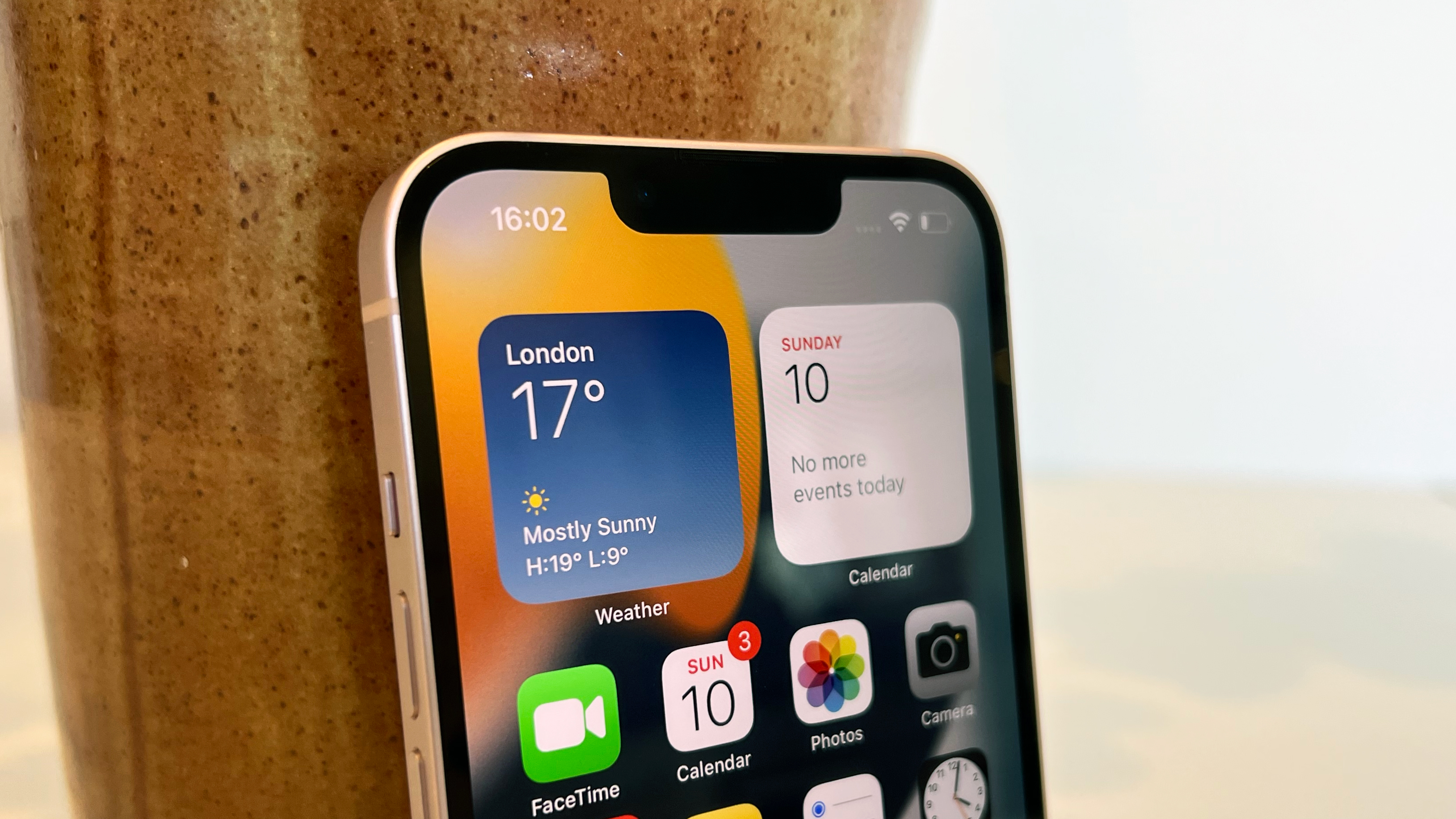
Apple iPhone 13 review: other features
As with other recent iPhones, the iPhone 13 uses Face ID facial scanning for secure unlocking. This new version has been redesigned, allowing for a smaller 'notch' cut-out at the top of the screen to house it, and in our experience the performance is just as good as before.
Apple sticks with using its own Lightning connector for charging, rather than switching to USB-C. You can fast-charge up to 20W if you have a suitable power adapter – Apple only provides a Lightning-to-USB-C able in the box.
You've also got Apple's MagSafe tech here, which is a ring of magnets under the back of the phone. They enable you to attach the iPhone to mounts easily, or you can use them with MagSafe wireless charging products for plug-less charging at up to 15W. The iPhone also works with regular Qi chargers, but only up to 7.5W.
There are high-quality stereo speakers for when you're watching video in landscape mode, though these don't seem to have been noticeably improved from last year.
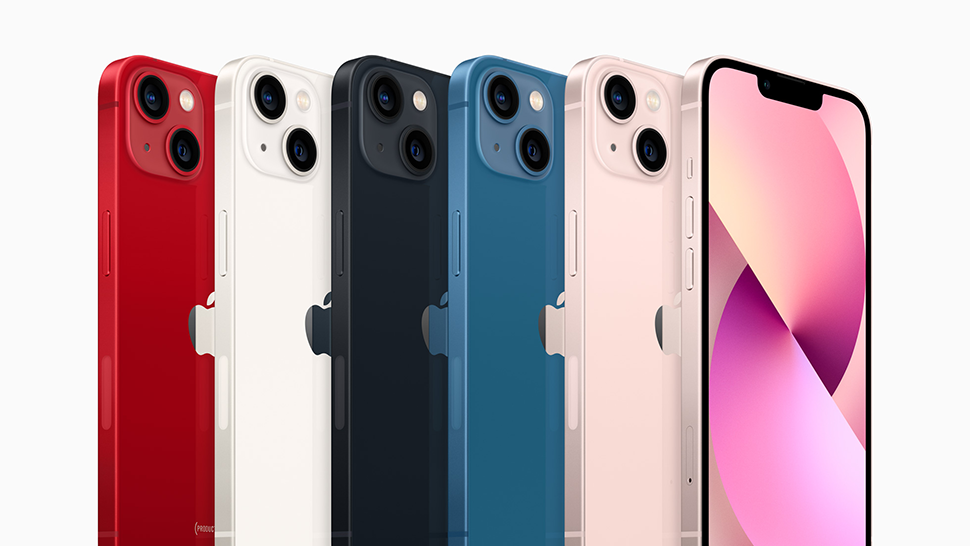
Apple iPhone 13 review: build & design
The iPhone 13 changes little from the iPhone 12 in terms of design, keeping a flat-sided design a very slim bezel around the screen, and curved corners. The sides are aluminium, and the rear is glossy glass.
Compared to the iPhone 11, the design of the iPhone 13 is a really significant leap forward. It's smaller in the hand, despite having the same size screen, and is majorly lighter, making it easy to manipulate in your fingers when you need to reach a more awkward part of the screen.
The tweaks that have been made from the 12 are that the notch is smaller (but not enough to make any real difference, so don't get too excited), and the rear camera bump has changed a big with the lenses now on the diagonal instead of above each other, in order to fit the new improved sensors.
The colours have also changed, so you now have a new variation on white/silver called 'Starlight', and new dark grey/black called 'Midnight', and then red, blue and pink. The red is a deep and vibrant hue, the blue is slightly petrol-ly hue, and the pink is a lovely pearly finish, and is probably the nicest of the five, but obviously everyone has their own preferences.
The front glass uses Apple's 'Ceramic Shield' material, which is extremely tough for avoiding shattering when dropped – it's very impressive stuff that hopefully you'll never have to rely on.
It's a wonderful bit of phone design overall, and we really love how much lighter it is than the iPhone 13 Pro. Having used both regular and Pro iPhones for the 12 and 13 models, we think that the lightness of the regular iPhone 13 is actually a real selling point over the Pro, assuming you don't need the extra photography features of the Pro. And if you're upgrading from any iPhone 11 model or slightly earlier, then you get that benefit too.
And, of course, the actual build quality is impeccable. The aluminium is flawless, the joins are seamless, and it's rock solid in the hand.
Apple iPhone 13 review: should you buy it?
The iPhone 13 is the pinnacle of phones today that aren't trying to cram as many features as possible in to get your intention, but instead are trying to make the things that are most important work as well as possible.
It's meticulously made, with an excellent camera system, a pro-level screen, great battery life, and more power than you can ever really need from it.
If you don't need the extra camera flexibility that the iPhone 13 Pro offers, or the even better battery life, then there very little to complain about from the iPhone 13 – it's sleek, it's fast and it delivers consistently.
Related article:

Thank you for reading 5 articles this month* Join now for unlimited access
Enjoy your first month for just £1 / $1 / €1
*Read 5 free articles per month without a subscription

Join now for unlimited access
Try first month for just £1 / $1 / €1
out of 10
The iPhone 13 is an excellent phone for demanding creatives who don't want the expense of the Pro model, delivering uncompromising image quality from both its screen and camera, and improved battery life as a bonus. While the iPhone 13 Pro does offer more, what you get here is hard to fault.
Matt is Managing Editor at TechRadar.com, and previously worked on T3, MacLife and MacFormat. He's been testing technology for over a decade, working in specialist Apple publications as well general technology and creative journalism, and has charted Apple’s ups and downs since his student days (but still hopes to hear “one more thing”). By day, you can find him covering TV, audio, smart home gear and more at T3.com, as Home Tech Editor. By night, he's probably updating or pairing or installing some new piece of technology in the quest for the perfect setup.
